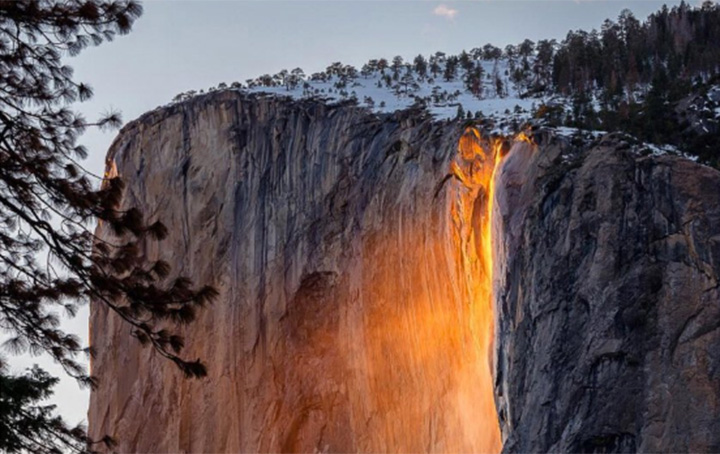A natural phenomenon dubbed “firefall” has wowed visitors of California’s Yosemite National Park, as the setting sun turns a waterfall into a flowing stream of molten lava.

The optical illusion happens yearly and draws scores of photographers to a spot near Horsetail Fall, which flows down the granite face of the park’s famed rock formation, El Capitan.
According to the U.S. National Park Service, Horsetail Fall can draw thousands of visitors at sunset, though the “firefall” effect can only been seen in the second half of February, weather permitting.
A clear sky and enough snow for the waterfall to cascade over the rock formation is needed before the “firefall” effect can occur.
“Even some haze or minor cloudiness can greatly diminish or eliminate the effect,” the park service explained on its website.
As National Geographic points out, famed landscape photographer Ansel Adams first captured the waterfall in the 1940s, however, the image was in black and white. The first colour image of the “firefall” effect was captured by National Geographic photographer Galen Rowell in 1973.
Here’s a look at some of images of this year’s natural phenomenon.
https://www.instagram.com/p/BQbzw8yh96p/








Comments